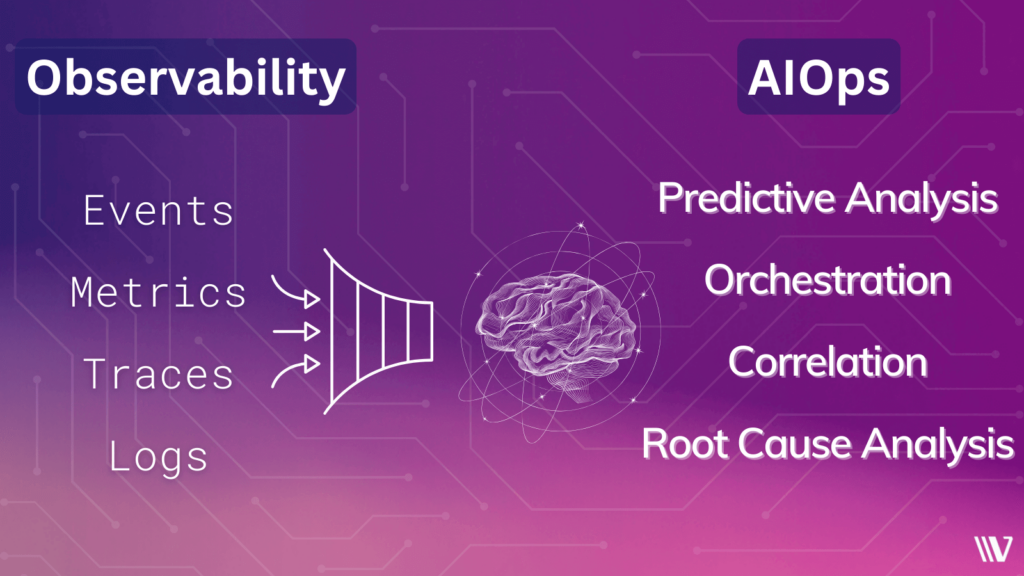If you’ve been keeping up on what’s buzzing in the IT operations and software development space in the past few years, then you know that the concepts of AIOps and observability have been getting a lot of attention. And while they are related, they each address a different aspect of managing and monitoring IT systems.
What is observability?
Observability is the ability to infer the internal state of a system based on its external outputs or behaviors—in other words, what you can observe about the system without directly affecting it. In the context of software systems, observable items include metrics, events, logs, and traces. The purpose of observability is to provide insights into how different components interact and behave to help you understand, debug, and optimize complex, distributed systems.
What is AIOps?
AIOps—short for artificial intelligence (AI) for IT operations—is the use of AI and machine learning (ML) techniques to enhance IT operations. It involves applying automation, analytics, and ML algorithms to analyze vast amounts of operational data to derive insights, make predictions, and take appropriate action. The purpose of AIOps is to improve the efficiency and effectiveness of IT operations by automating routine tasks, detecting anomalies and issues, identifying the root cause of problems, and providing actionable insights to optimize performance and reliability.

The relationship between observability and AIOps
Observability provides the inputs—visibility and data—about the environment or system. AIOps uses those inputs to automatically perform analysis to identify patterns, anomalies, and correlations. AIOps enhances observability by leveraging AI and ML, as well as automation, to handle vast amounts of data and deliver actionable insights to anticipate and understand issues for more effective troubleshooting, as well as uncover opportunities to improve the reliability, performance, and efficiency of the system.
So, which is better, AIOps or observability? That was a trick question. It’s not an either/or proposition. Observability and AIOps complement each other, and organizations benefit from implementing both in their IT operations and monitoring strategies.
Bring observability and AIOps together with Virtana
The Virtana Platform enables you get applied hybrid observability. What does that mean? It’s AI-powered full-stack visibility that delivers actionable insights into application health, migration, performance, multi-cloud cost management, and monitoring—so you can find and fix problems faster and make better data-driven business decisions. Request a trial
About the Author
Meeta Lalwani is a director of product management professional leading the AIOps (Artificial Intelligence for IT Operations) and GenAI Portfolio for the SaaS (Software as a Service) platform at Virtana. She is passionate about modern technologies and their potential to positively impact human growth.
Meeta Lalwani




